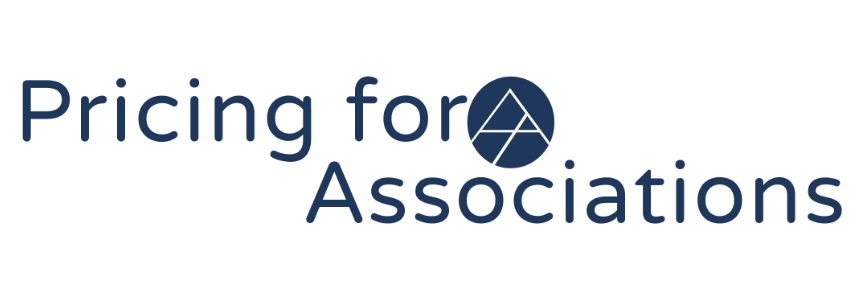2025 Association Pricing Trends: What the Data Tells Us About Strategy and Sustainability
What’s Changing in Association Pricing—and What Should You Do About It?
Association leaders are facing a perfect storm: rising operational costs, inflation, evolving member expectations, and economic uncertainty. Pricing has never been more important—or more complex.
The 2025 Industry Pricing Trends & Strategies Report sheds light on how associations across the country are adjusting their pricing strategies to meet these pressures head-on. From modest increases in membership fees to new digital revenue models, associations are balancing sustainability with value in new and innovative ways.
So what’s working—and what’s not? Let’s dive in.
Key Findings at a Glance
Most organizations expect 1–5% price increases across offerings in 2025.
Certification pricing is rising fastest: 100% of respondents plan bundled pricing and a 6–10% increase.
Membership is the most flexible area for pricing adjustments, while online education is the most resistant.
Value-based and tiered pricing are becoming the norm.
Discount fatigue is a growing concern, despite early-bird and group offers remaining popular.
43% of associations will conduct a value analysis in 2025, mostly through member satisfaction surveys.
Trends and Challenges by Category
1. Planned Price Increases
Most associations plan modest increases for 2025:
Membership: 75% anticipate a 1–5% increase.
In-person education & events: Around 82% expect a 1–5% bump.
Sponsorships: Mixed strategies, with 56% planning a 1–5% increase and others aiming higher.
Online Education: 58% expect a 6–15% rise, but also the highest resistance to change.
Certification: 100% plan a 6–10% increase, all using bundled pricing.
2. Key Pricing Drivers
Increased Costs: The #1 factor across all offerings.
Inflation: A close second, especially for in-person services.
Benchmarking & Feedback: Driving change particularly in sponsorship and online education pricing.
Member Feedback: Sole driver for certification pricing increases.
Top Pricing Strategies for 2025
Across association offerings, here’s how pricing is being structured:
Value-Based Pricing: Most common for membership, sponsorship, and in-person education.
Tiered Pricing: Gaining popularity to offer choice and flexibility.
Bundled Pricing: Especially prominent in certification and online education.
Discounts: Still widely used—but concerns are growing about effectiveness.
Discounting Practices and Concerns
Most Common: Early-bird and group discounts (used by 83%).
Less Frequent: Promotional discounts (50%).
Emerging Concern: Overuse of discounts is causing:
Delayed purchasing behavior
Reduced perceived value
Member dependence on deals
Emerging Revenue Streams
Associations are actively exploring new income sources beyond traditional models:
Sponsorship Innovations: Webinar sponsorships, affiliate programs, and speed networking events.
Educational Expansion: AI bootcamps, asynchronous learning, and on-site training.
Digital Monetization: Selling digital assets, career center features, and social media access.
Event and Product Diversification: Bundled event pricing and branded merchandise.
Value Analysis: A Growing Trend
43% of associations plan to conduct a value analysis in 2025.
Top Method: Member satisfaction surveys (68.75%).
Other tools include competitive benchmarking and focus groups
The trend signals a shift toward data-driven pricing decisions grounded in member insight.
Challenges Ahead for Associations
Associations report facing several key pricing challenges:
1. Economic Pressures on Members
Reduced budgets and public-sector cuts impact retention.
Members are increasingly value-conscious and selective.
2. Rising Organizational Costs
Event production and daily operations are becoming more expensive.
Many fear pricing members out.
3. Value Misalignment
Difficult to justify increases without clearer value communication.
Education pricing is under special scrutiny.
4. Internal Resistance
Boards are often hesitant to approve increases.
Staff may feel stalled when action isn’t taken.
5. Governance Gaps
Many associations lack formal pricing strategy frameworks.
Some are developing pricing thresholds based on ROI metrics.
The Big Picture: Industry-Wide Shifts
Inflation and Market Volatility: Associations are reevaluating discretionary pricing.
Changing Member Behavior: Demand is growing for à la carte options over bundled memberships.
Flexibility is Key: Bundled and subscription models are emerging as sustainable, accessible alternatives.
What Associations Want to Learn Next
Survey respondents expressed strong interest in:
How often associations adjust prices
Real-life examples of value-based pricing success
Affordable pricing research and testing strategies
Tiered sponsorship models and benchmarks
Pricing’s impact on acquisition and retention
70% of respondents opted in for future insights—a clear sign that pricing innovation is top of mind.
Conclusion: From Trend to Strategy
The 2025 report paints a picture of an industry in transition. While price increases are modest, associations are becoming more intentional, flexible, and data-driven.
To thrive, organizations must:
Align pricing with value and member expectations
Invest in feedback and competitive research
Explore new revenue streams without diluting impact
Strengthen governance and pricing frameworks
This is more than a reaction to inflation—it’s a shift toward long-term pricing maturity.
Thank you to all the associations and professionals who participated in the survey—your insights are helping the entire sector grow smarter, stronger, and more resilient.
Are you ready to tackle your association’s pricing problems? Visit www.pricingforassociations.com today to schedule a virtual coffee chat where we can discuss what your organization needs and how we can best support you.


